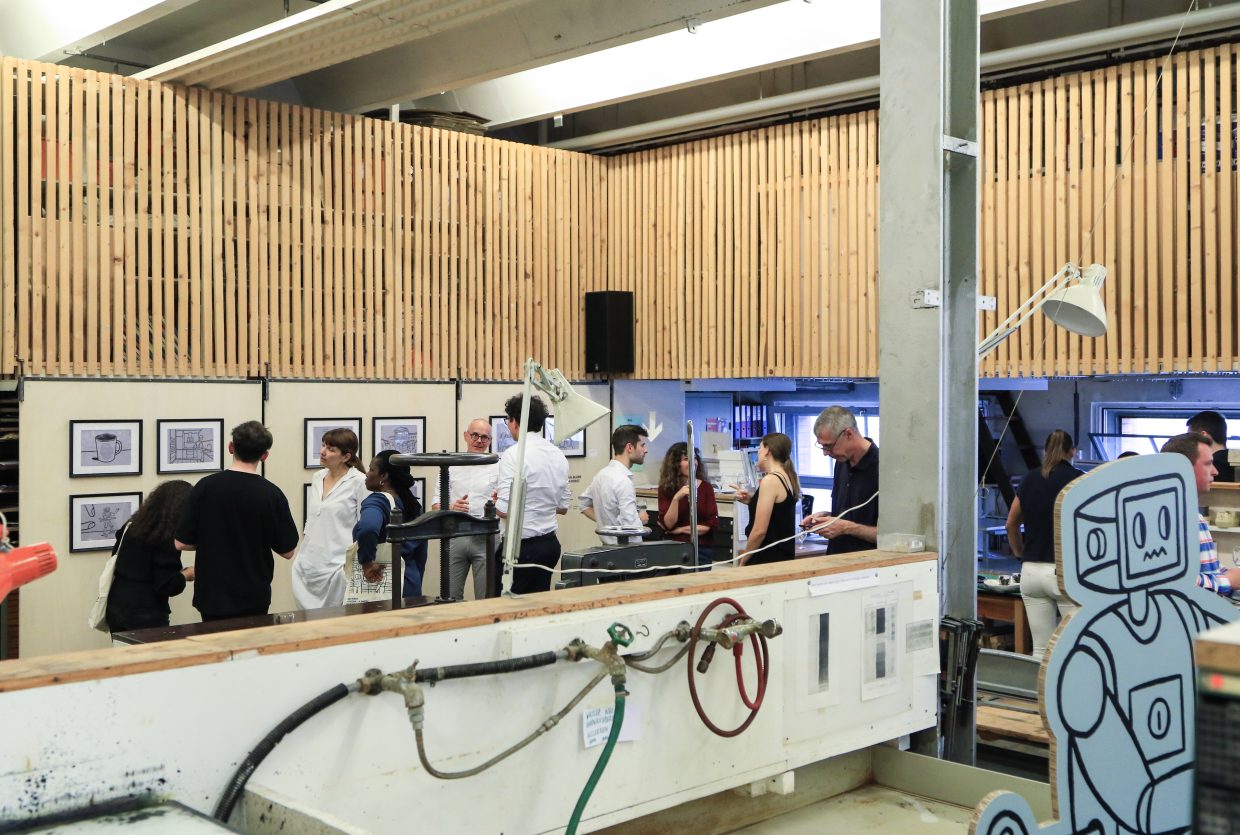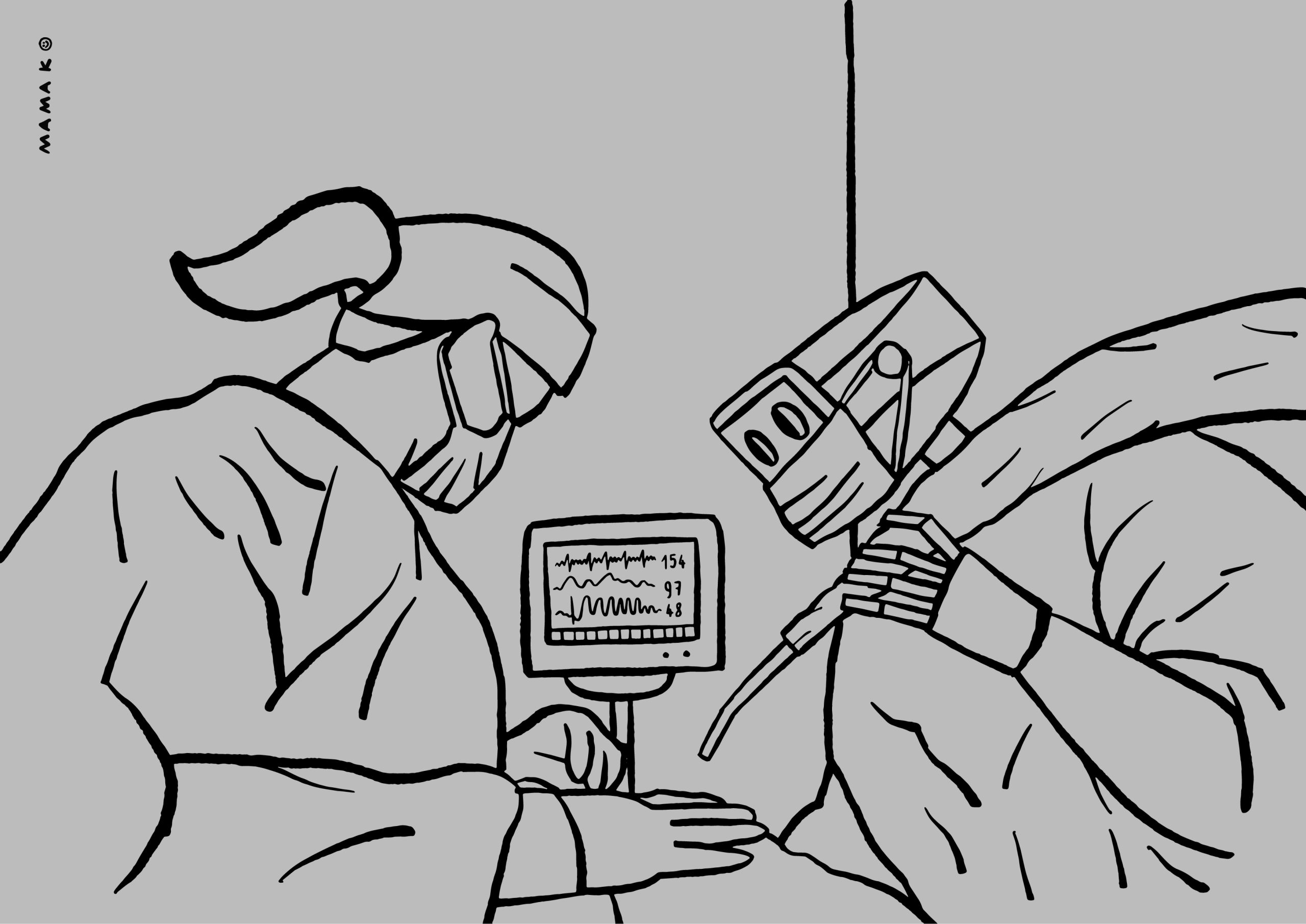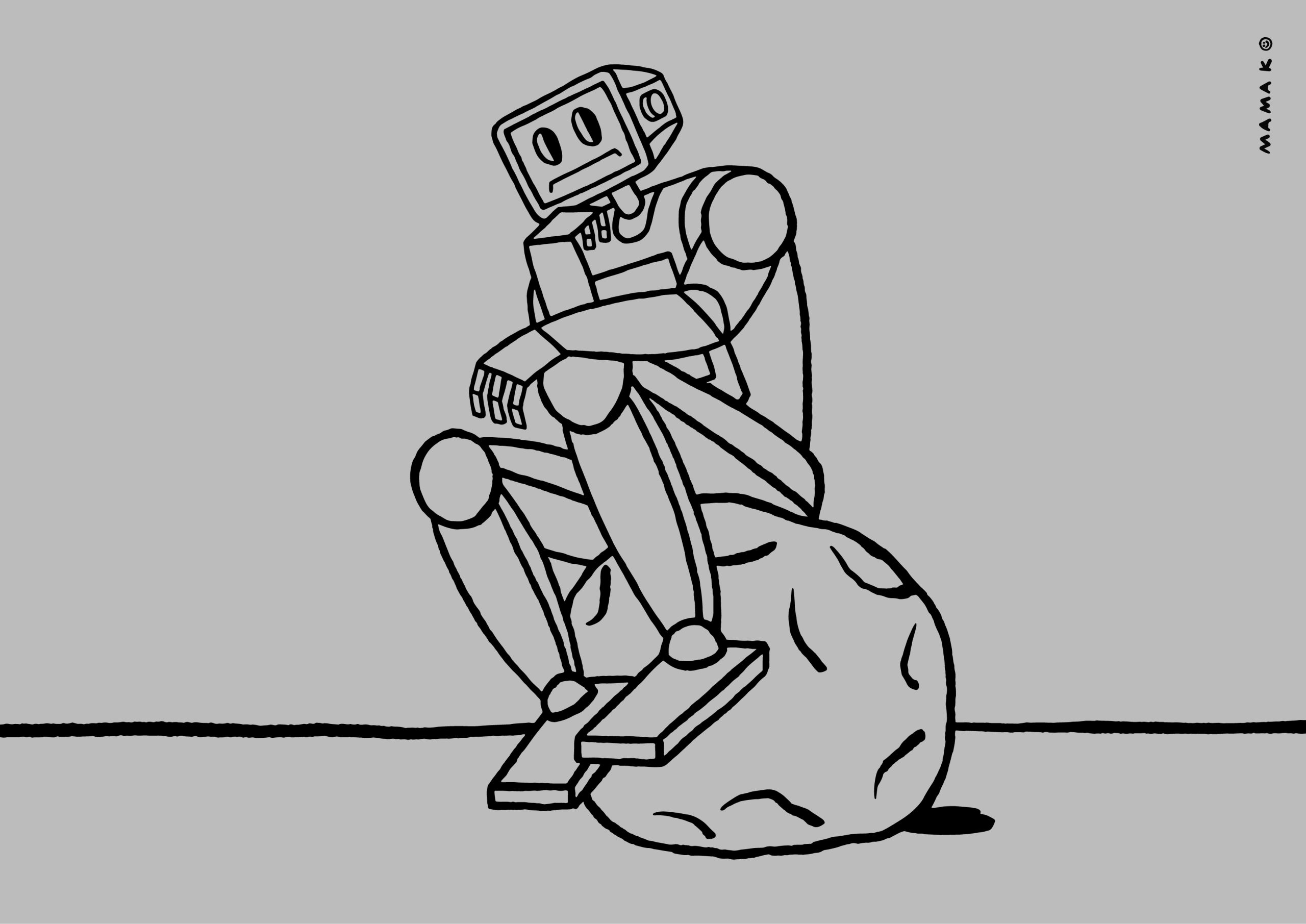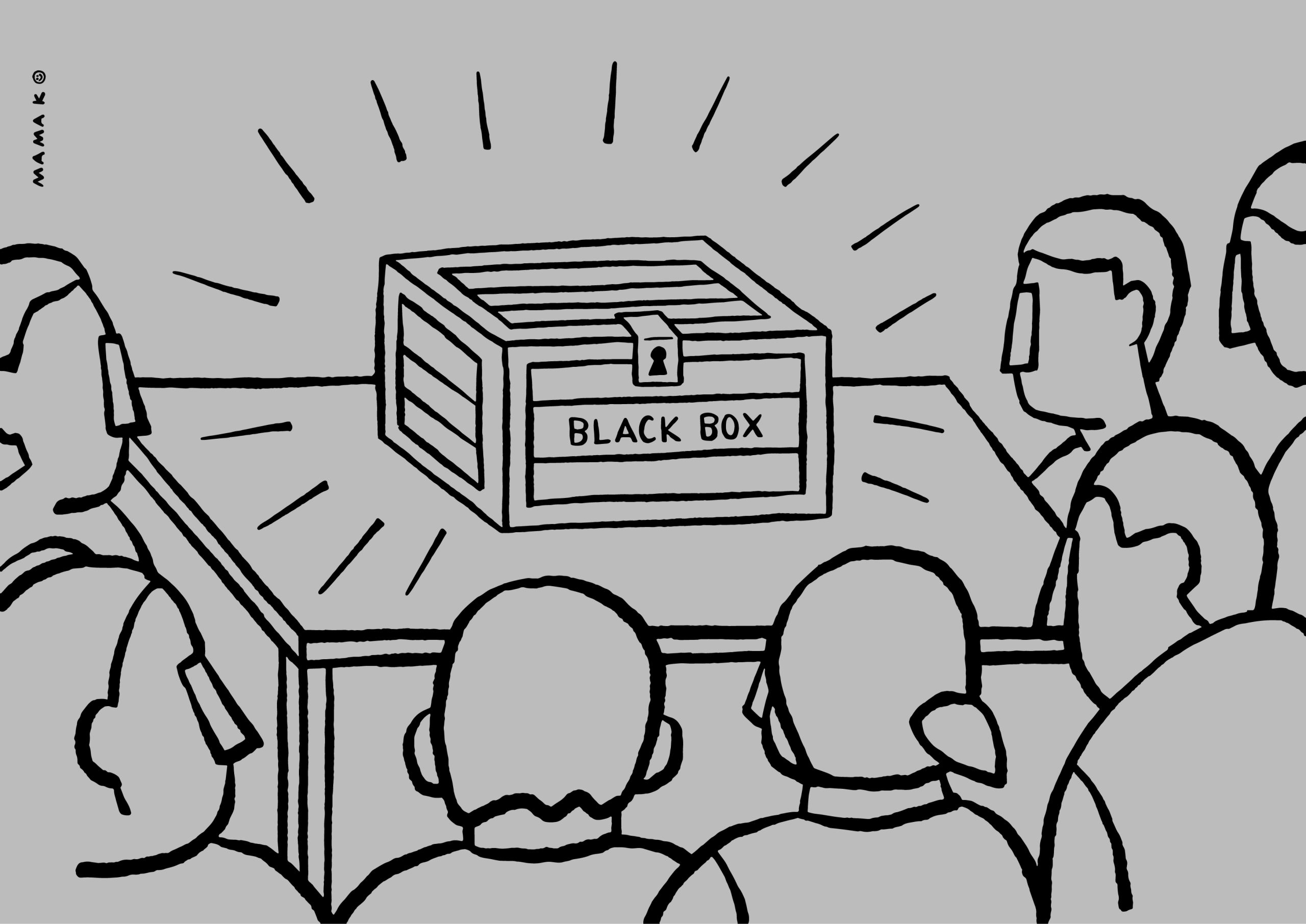Human-Robot Interaction: A Digital Shift in the Law?
Nicolas Zahn • June 2022

The Swiss Digital Initiative presented the Digital Trust Label at the vernissage for an interdisciplinary research project at the University of Basel. The project, funded by the Swiss National Science Foundation, brings together computer scientists and lawyers to discuss the implications for the legal system of human-robot interaction.
Can an autonomous car act as a witness in a trial after an accident or could it even be a suspect? Are digital traces of someone’s behaviour adequate proof in a court of law? Could sentences be issued by an algorithm rather than a judge? The use of digital technologies in the field of law raises complex questions that an interdisciplinary research project at the University of Basel across several faculties is addressing.
The project, which is funded by the Swiss National Science Foundation, not only brought different academic fields together but also chose to create illustrations for various chapters of the forthcoming publication to easily communicate the abstract issues.
Those illustrations – some of them shown in the gallery below – are on display at the cultural space Warteck in Basel. At the vernissage last week, the Swiss Digital Initiative was invited to present the Digital Trust Label as an example of how labels could contribute to more digital trust, something that is of great importance for the use of technologies in the legal sector.
We believe that self-certifications and abstract commitments are a good step but not enough. Only an independently audited label can act as a credible signal for digital responsibility. The Digital Trust Label with it’s inclusive development process, the scientific backing and the clear governance acts as a good example for a credible label.
The questions from the audience and the following discussion also showed participants desire for tools to address the complex issue of digital trust and digital responsibility in their work and research. We are looking forward to the conclusion of the project and the forthcoming publication to better understand how humans and robots can interact in the legal field.
![]()
![]()



![]()
![]()